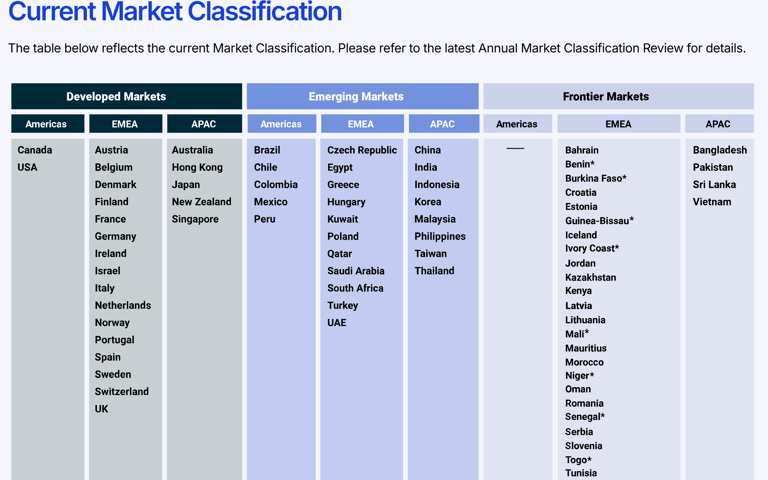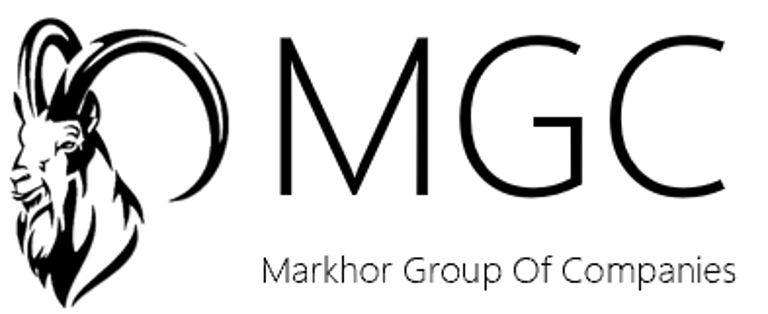The Importance of Frontier Markets In The Coming Years
FRONTIER MARKETSINTERNATIONAL TRADEECONOMICS


The Importance Of Frontier Markets In The Coming Years
A Quiet Power Rising
With disruptions across regions, geopolitical chaos, and global supply chains reconfiguring, we see an uplift in market consciousness from traditional economic giants to previously overlooked frontier regions (Black Rock, 2024). Frontier markets are becoming ever more geo-strategically important, as major trading nations seek new trade and investment partners (IMF, 2024). The frontier regions are quietly positioning themselves as engines of future long-term growth and the next global giants of development.
What Are Frontier Markets?
Often, not entirely understood. Frontier markets can be viewed as the smaller, less structured counterparts to emerging markets, typically with less industrialised economies and with less developed financial systems. Though frontier markets represent only a small portion of global market capitalisation, they offer a compelling mix of growth potential and undervaluation. Given the inherent risk premium, capital is typically deployed with high conviction and a long-term transformation thesis.
FIGURE 1: MSCI MARKET CLASSIFICATION (MSCI, 2024)
Demographic and Urbanisation Megatrends
Over the next five years, population growth and urbanisation are set to accelerate across frontier economies, reshaping consumption patterns, labour markets, and infrastructure priorities. Median ages ranging from 24-26 and rising rates of rural-to-urban migration, these economies are cultivating new consumer classes (UN DESA, 2024). The resulting shift fuels demand for digital infrastructure and catalyses growth in foundational sectors such as financial services, healthcare, and logistics. In many respects, frontier markets today mirror the early-stage dynamism of East Asia in the 1980s (World Bank, 2023).
Key structural indicators from frontier markets include:
18% of the global population (UN DESA, 2024)
29–30% of global landmass (World Bank, 2024)
41% of global oil reserves and 26% of natural gas reserves (Energy Institute, 2023)
50% of global lithium reserves (USGS, 2024)
20% of global copper reserves (IEA, 2024)
Africa’s frontier markets account for 57% of global cobalt and 46% of industrial diamond output (USGS, 2024)
Strategic Relevance in a Fragmented World
As geopolitical pressure intensifies, companies and governments are pivoting toward frontiers as strategic alternatives. These emerging economies, rich in critical minerals, energy, agricultural capacity, and manufacturing potential, are increasingly being seen as cost-effective and politically circumspect partners. According to a BlackRock report, multinational firms are actively seeking neutral jurisdictions that balance access to skilled labour and raw materials. A few examples are outlined below:-
Vietnam: High-Tech Manufacturing Surge (AppleInsider, 2024) (Reuters, 2023)
Apple, Samsung, and Intel have significantly expanded operations in Vietnam.
As of 2024, Apple’s cumulative supply chain investment in Vietnam exceeded $16 billion, creating over 200,000 jobs.
Morocco: Automotive and Renewable Energy Hub (Financial Times, 2024)
Stellantis and Renault have made Morocco a key manufacturing base for electric vehicles and automotive components.
Morocco is also scaling up green hydrogen and solar capacity as part of EU-linked energy cooperation.
Kazakhstan: Critical Minerals & China-Europe Logistics (International Energy Agency, 2023)
Kazakhstan is emerging as a key supplier of uranium, copper, and rare earth elements, critical to clean energy transitions.
The country is expanding its role in China-to-Europe rail corridors under the Belt and Road Initiative, reducing overdependence on Russia-controlled routes.
Indonesia: Battery Metals Powerhouse (Bloomberg, 2024)
Indonesia, the world’s largest nickel producer, has secured billions in EV battery investments from Tesla, LG, and CATL.
The government’s export ban on raw nickel ore incentivised onshore value creation, positioning Indonesia as a cornerstone of the global EV supply chain.
Challenges and Why They Matter Less Than You Think
As the global economy tilts, frontier markets are poised to shift from peripheral players to central actors. While frontier markets inherently carry volatility, governance challenges, and often illiquid capital markets, the differentiator is disciplined selectivity and long-term strategy. And, as institutional capacity strengthens and capital access broadens, many of these risks are being progressively offset by structural reforms, improved policy frameworks, and the emergence of a more sophisticated and risk-aware investor class.
Reference List
1. BlackRock Investment Institute (2024). Why frontier markets are gaining strategic relevance in global supply chains. BlackRock Frontiers Trust Insight.
2. International Monetary Fund (2024). Geoeconomic Fragmentation and the Rise of “Strategic Partners” in Emerging and Frontier Markets. IMF Global Outlook Report. https://www.imf.org/en/Publications/WEO
3. MSCI Market Classification: Assessing and categorising equity markets according to common characteristics. https://www.msci.com/indexes/index-resources/market-classification
4. United Nations Department of Economic and Social Affairs (UN DESA), Population Division (2024). World Urbanization Prospects & Demographic Indicators. https://population.un.org/wup/
5. World Bank (2023). Frontier Markets: Lessons from East Asia’s Development Experience. Global Economic Prospects Report. https://www.worldbank.org/en/publication/global-economic-prospects
6. United Nations Department of Economic and Social Affairs (UN DESA), Population Division (2024).
https://population.un.org/wpp/
7. World Bank and CIA World Factbook (2023–2024).
https://data.worldbank.org, https://www.cia.gov/the-world-factbook
8. BP Statistical Review of World Energy (2023).
https://www.energyinstitute.org/statistical-review
9. U.S. Geological Survey (USGS), Mineral Commodity Summaries – Lithium (2024).
https://www.usgs.gov/centers/national-minerals-information-center
10. International Energy Agency (IEA), Global Critical Minerals Outlook (2024).
https://www.iea.org/reports/global-critical-minerals-outlook-2024
11. United States Geological Survey (USGS, 2024); Kimberley Process Statistics. https://www.kimberleyprocess.com/en/statistics, https://www.usgs.gov
12. AppleInsider (2024). Apple has spent more than $16 billion on supply chain in Vietnam since 2019. https://appleinsider.com
13. Intel weighs expansion of $1.5 billion Vietnam plant. https://www.reuters.com/technology/intel-weighs-expansion-15-bln-vietnam-chip-plant
14. Financial Times (2024). Morocco emerges as hub for EV manufacturing in Europe’s supply chain realignment. https://www.ft.com/content/renault-stellantis-morocco-ev
15. International Energy Agency (2023). Critical Minerals Market Review. Kazakhstan cited for uranium and copper supply. https://www.iea.org/reports/critical-minerals-market-review-2023
16. Bloomberg (2024). Indonesia’s battery metals policy reshapes global EV supply chain. https://www.bloomberg.com/news/articles/2024-03-12/indonesia-nickel-ban-ev-supply-chain.




